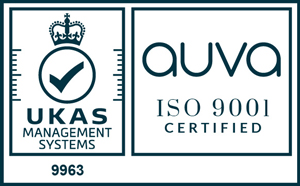Beyond Watts: Why Open Circuit Voltage (VOC) is the Unsung Hero in Solar Panel Performance

During evaluation of our solar panels, we often find that customers tend to focus on the wattage output compared to other brands. Yet, a more vital factor that often goes unnoticed is Open Circuit Voltage (VOC). While wattage undeniably matters, at Genie Insights we believe that Open Circuit Voltage deserves the spotlight. This article will explain why VOC is more crucial than the number of watts a solar panel produces.
Understanding Open Circuit Voltage (VOC)
Wattage, or peak power, is the most advertised measure of solar panels. However, peak power is usually achieved under laboratory conditions, where factors like temperature, shading, and real-world inefficiencies are absent. When panels are installed in the field, these factors can significantly reduce the actual power output, making the peak power a less accurate representation of real-world performance.
Open Circuit Voltage (VOC) refers to the voltage a solar panel generates when no load is connected to it. Simply put, it represents the energy potential the panel can generate, waiting to be harvested. VOC, therefore, provides a more reliable insight into the panel’s potential under varying conditions. It helps to anticipate how the panel will behave when exposed to real-world challenges, enabling better decision-making for system design and performance estimation.
The cells in solar panels are connected in a chain-like fashion. When you connect cells in series, it adds up the voltages of each cell. So, the more cells you connect in a row, the higher the voltage your solar panel can produce. Simply put, the Genie Insights high voltage panel, which has been developed in conjunction with UK manufacturer MiPV via a special manufacturing process, has more cells in series than a comparable standard panel of the same wattage, which boosts the voltage of the panel.
System Efficiency and Voltage Loss
In solar energy systems, energy losses occur at various stages: during conversion from DC to AC (inverter losses), transmission through cables, and due to shading or dirt on the panels. These losses often translate to a drop in voltage along the system. A higher Open Circuit Voltage can counteract these losses by starting with a higher initial voltage, ensuring that the usable voltage at the end of the system is still sufficient for effective energy conversion.
The number of bypass diodes is also important in managing losses within the system due to shading or obstruction. You can read more on this in our blog ‘How Multiple Bypass Diodes Supercharge Solar Panel Performance’ here.
Performance Over Time
While higher wattage panels might seem attractive, their performance can degrade faster over time due to factors like temperature stress. Panels with higher VOC tend to age more gracefully as they are designed to withstand higher voltage stress. This means that even after years of use, panels with higher VOC are more likely to retain a higher proportion of their original output, contributing to the system’s overall longevity and efficiency.
Open Circuit Voltage (VOC) is often overlooked by operators when selecting a solar panel supplier, with wattage output tending to be the measure of choice. However, the importance of VOC shines through when considering real-world performance and system efficiency. While wattage undoubtedly matters, VOC provides a more accurate and versatile insight into a solar panel’s potential, making it a vital parameter to consider. So, the next time you evaluate a solar panel, remember, it’s not just about the watts – it’s about the voltage waiting to be unlocked.
Find out more about the range of Genie Insights’ solar solutions here.


